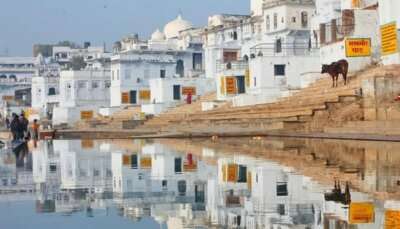Explore The History Of Diwan E Khas Fatehpur Sikri In 2025
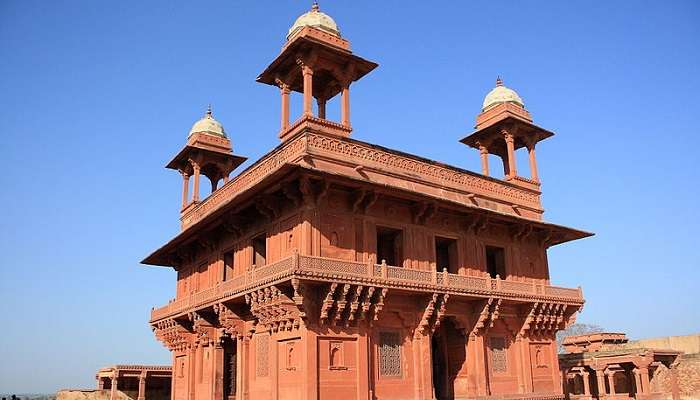
Diwan-E-Khas Fatehpur Sikri, also known as the Hall of Private Audiences, is a grand chamber in Fatehpur Sikri. This is where Emperor Akbar had discussions with people about the faiths belonging to different religions. This square-shaped structure features four chhatris and is extremely popular for its intricately carved colossal central pillar. Showcasing the Persian style of architecture and embellished with precious stones, this building is a must-visit for those interested in getting a peek into the Mughal Era.
About Fatehpur Sikri
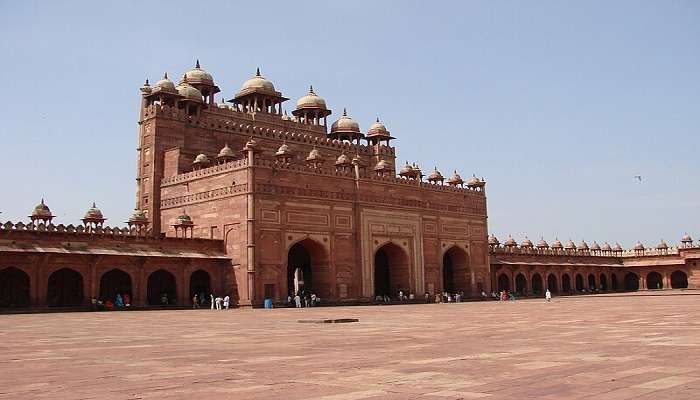
Fatehpur Sikri, a part of the Agra region, was formerly the thriving capital of Mughal Emperor Akbar until 1585 when it was abandoned due to its proximity to the Rajputana neighbourhood and a lack of water. The capital was relocated to Agra, and the town remained abandoned for most of its history. Fatehpur Sikri was once known as Fatahabad, which comes from the Persian term Fatah, meaning triumph. Akbar’s objective in establishing the city was to honour the Sufi saint Salim Chishti, and the entire palace complex is centred on his grave. Today, the city is one of India’s best-surviving examples of Mughal architecture. This beautiful structure, which took over fifteen years to finish, is more than simply a monument.
Timings: 7 AM-6 PM
Entry Fee: INR 35 and INR 550 Foreigners
Must Read: Places To Visit Near Taj Mahal
History Of Diwan-e-Khas
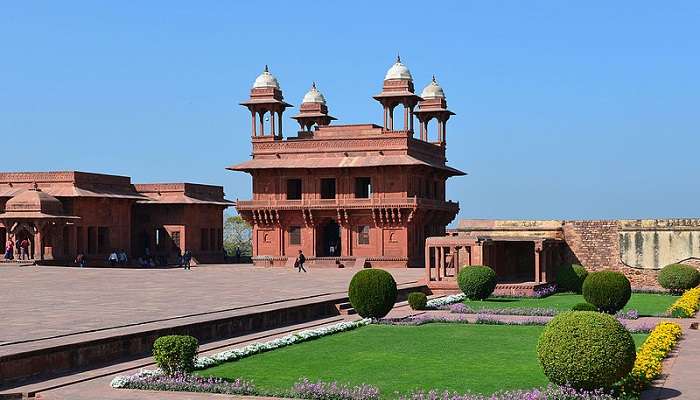
The emperor utilised the Diwan-i-Khas, or Hall of Secret Audience, to receive important guests such as kings, diplomats, and nobles in secret and conduct significant state business. Constructed in 1635, it featured two halls, the interior of which was known as Tambi khana. Diwan-i-Khas had a flat hardwood ceiling decorated with gold and silver leaves in relief to resemble the sun’s beams. It is open on three sides and may be entered by five arched entrances supported by double columns. Unlike other architectural examples from Shah Jehan’s reign, it lacked chhatris over the parapet.
The Persian inscription within the internal hall, inlaid in black stone and dated 1636–37, compares the room to the highest sky and the emperor to the sun. The chambers were lavishly ornamented with extremely polished inlay work in floral patterns around the dados’ edges and stunning relief carvings in the centre. The work was done judiciously in carefully selected locations to display the piece in the greatest possible light.
Architecture Of Diwan-e-Khas

The Diwan-i-Khas, or Hall of Private Audience, was designed primarily in Persian architecture. A carved centre column dominates the interiors, while the four open pillars at the top are embellished with magnificent sculptures and valuable stones. One of these pillars connects to the centre platform, where the emperor would sit. Ministers and nobility are supposed to have occupied the diagonal galleries that encircle it. However, the galleries were often excessively small, making it impossible to accommodate all of the court’s ministers at once.
According to others, the Diwan-i-Khas houses the royal household’s diamonds, jewels, and other valuable valuables, with the emperor making infrequent visits. Despite the lack of embellishment in the construction, it is undoubtedly one of Fatehpur Sikri’s most popular tourist attractions.
Suggested Read: Things To Do In Agra
Diwan-e-Khas Timings And Entry Fees
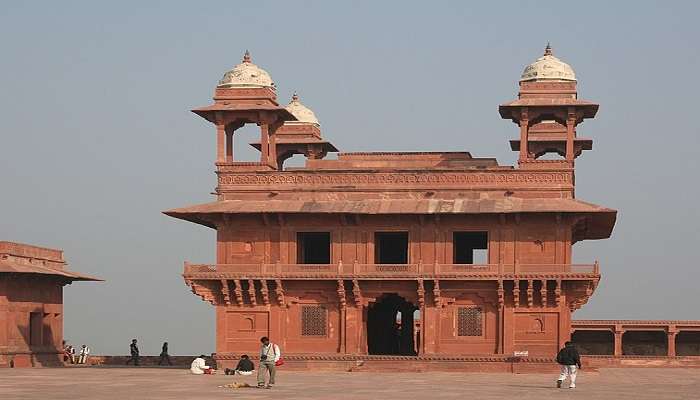
The Diwan-i-Khas is one of the most attractive sights in Fatehpur Sikri, and it is part of it. Fatehpur Sikri’s Buland Darwaza is open year-round for visitors. It is open every day of the week, from dawn to dusk. You do not have to pay an additional price to enter this structure. To visit Fatehpur Sikri, you must pay an admission charge, which varies for domestic and foreign visitors. While Indian nationals and those from SAARC and BIMSTEC nations pay a 35 INR entrance charge, overseas visitors pay 550 INR. There is no entry cost for children under the age of 15.
Best Time To Visit Diwan-e-Khas
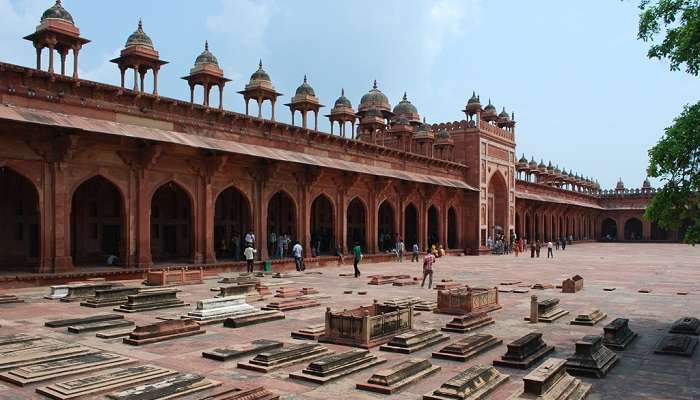
Diwan-i-Khas, part of Fatehpur Sikri, is located in Uttar Pradesh. During the summer, temperatures can range from 41°C to 45°C. The perfect time to visit is during the winter (November-February). The weather will also perfectly suit you to roam around the city these days. Plan your morning or late afternoon visit to allow for a more comfortable exploration.
Suggested Read: Resorts In Agra
How To Reach Diwan-e-Khas In Fatehpur Sikri?
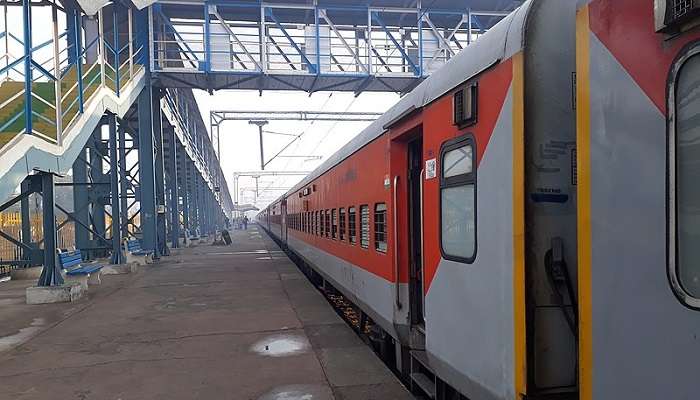
The distance from Agra to Diwan E Khas 36 km. It is around 35 km from both the Idgah bus station and the Agra Cantt railway station. The nearest railway station to the fort is Fatehpur Sikri, which is just around 3 km away. The distance from Agra Airport is 34 km. However, the nearest international airport is in Delhi (215 km distant). And here are the many methods to approach Diwan E Khas in Fatehpur Sikri:
By Train – You may go from Agra to Fatehpur Sikri. It’s a small station three km from Diwan E Khas. From the station, you may take an auto-rickshaw to the fort complex.
By Bus – Buses are also accessible to Fatehpur Sikri. The bus stop is around 3 km distant from the fort. You may take an auto-rickshaw from the bus stop.
By Auto/E-rickshaw – You can also take an auto-rickshaw directly from Agra to Fatehpur Sikri Diwan E Khas. They’re available everywhere in Agra.
By Cab – The most comfortable way to get from Agra to Fatehpur Sikri is via cab or taxi. You may easily explore Diwan E Khas, the fort complex, and other local locations by renting a car from one of Agra’s best rental firms.
Things You Can Do At Fatehpur Sikri
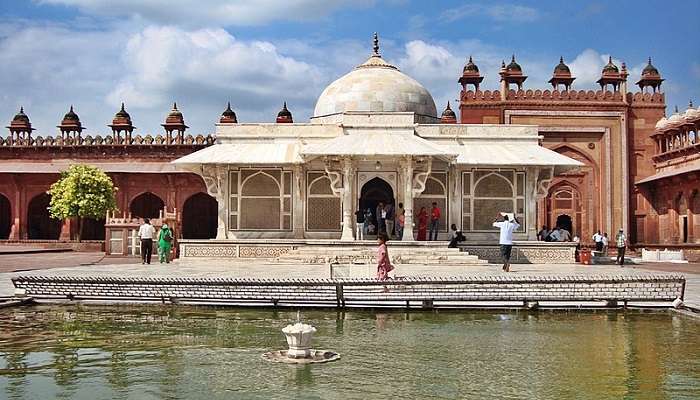
1. Admiring the architecture – The Buland Darwaza at Fatehpur Sikri is well-known for its architectural splendour. As you approach the towering doorway, you’ll be impressed by its clever design and construction. Visit this huge entry gate to study the intricate sculptures and imagine how they were created centuries ago.
2. Examining the inscriptions – Parts of the gateway are adorned with aesthetic Persian inscriptions that demonstrate Akbar’s belief in religious peace. An inscription engraved on the main doorway recounts Jesus’ counsel to his disciples. Around the summit of Buland Darwaza, the verses in the holy script of the Quran have also been carved in Naskh script
3. Learning Mughal history – With a knowledgeable and well-read guide, you may undoubtedly delve into the historical relevance and importance of Buland Darwaza. They will make you understand and recount the history and mythology of this location. You could also learn something new about Mughal kings’ lives and how they used to spend their time.
4. Taking beautiful images – The magnificent Buland Darwaza is an ideal location for photographers. It offers much to photograph, including ornate carvings, archways, and stunning gallery vistas. It also makes a great backdrop for taking photos of people.
5. Exploring the fort complex –The adjacent Fathepur Sikri complex offers several interesting sites to see. It features several halls. The most popular ones are Diwan-i-Aam and Diwan-i-Khas. There is also a palace for the Royal Family. You may also visit Jama Masjid and pay your respects at Salim Chishti’s Tomb.
6. Shopping for souvenirs – Visit the local bazaars at Fatehpur Sikri. Several shops provide souvenirs, handicrafts, and traditional Indian clothes. Jewellery, ceramics, and tiny paintings are among other options to consider. Attars (perfume oils) created from traditional aromatic components are also highly recommended.
Further Read: Hotels Near Taj Mahal
The Diwan E Khas is a treasure of Agra’s rich cultural heritage, where history, spirituality, and architectural beauty meet together to create an unforgettable experience. Whether a traveller is searching for peace and spirituality or a traveller searching for a beautiful place to visit, this place will cater to both your needs. So plan a trip to Agra and prepare to go to a place where you might forget about your usual busy day and immerse yourself where every stone silently tells tales of a past era and where the connection between the human and the divine is made.
For our editorial codes of conduct and copyright disclaimer, please click here.
Cover Image Credit: Kbsenthilkumar for Wikimedia Commons
Frequently Asked Questions About Diwan-e-Khas Fatehpur Sikri
Where is the Diwan-e-Khas located and what is it famous for?
It is located in the Red Fort complex in Old Delhi, India. The Red Fort where Diwan E Khas is located is a famous UNESCO World Heritage site.
How do I get to the Diwan-e-Khas?
After entering the Red Fort from the Lahori Gate, you will find the Diwan-e-Khas towards the western side of the complex.
What is the time to enter Diwan E Khas for the public?
Yes, the Diwan-e-Khas is open to the public as part of the Red Fort monument. It is open every day except Mondays from 9:30 am to 4:30 pm.
Are guides available at Diwan E Khas?
Yes, authorized guides provide tours of the Red Fort including the Diwan-e-Khas in Hindi, English and other languages for a fee.
Can I take photos inside?
Photography is permitted inside the Diwan-e-Khas for personal, non-commercial purposes only. Use of tripods, lights etc requires prior permission.
Which is the best time during the day to visit Diwan E Khas?
The best time to visit Diwan E Khas is during the evening, a little before the sun sets. Even though you can visit during the day in the winter seasons and can soak yourself in the sun.
How much time do visitors spend here?
Most of the visitors spend around 30-60 minutes inside the Diwan-e-Khas. They take time to explore and adore the intricate architecture and history.
People Also Read:
Hotels Near Taj Mahal Picnic Spots Near Agra Things To Do In Agra

With a passion for exploring and travelling to the roads long forgotten, experience the world through enthralling stories and adventures. Join me as I share my experiences at some of the world’s most popular tourist destinations and quench that pestering curiosity with something exciting!




